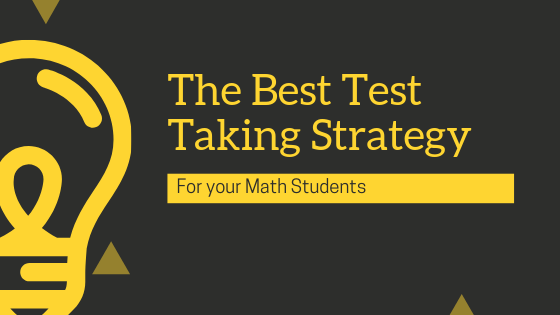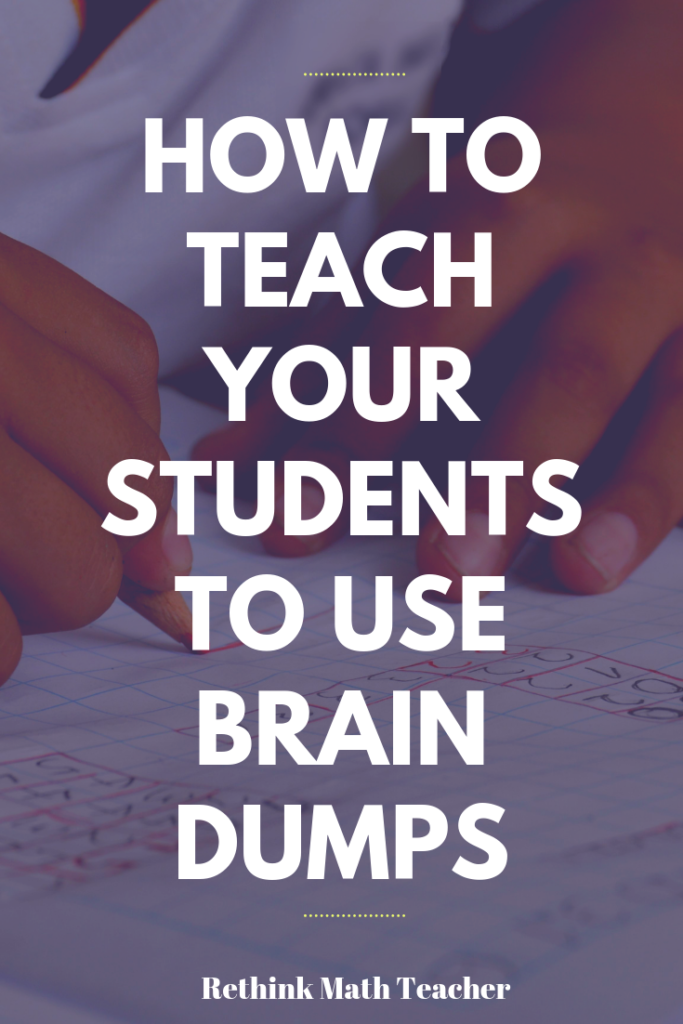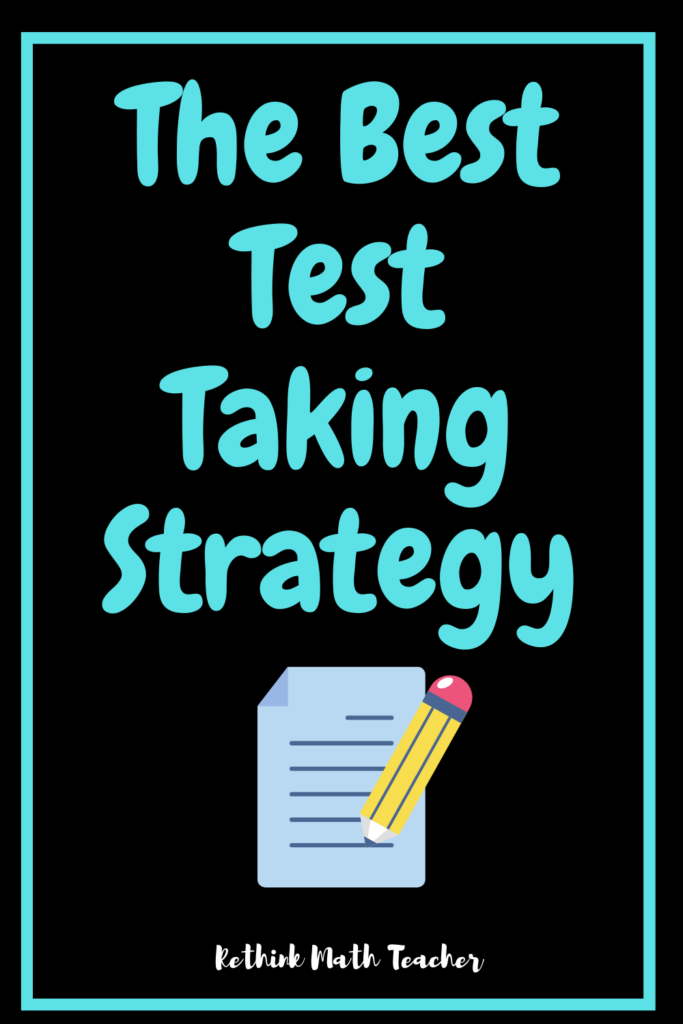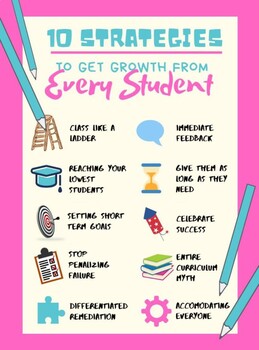
When your students get their end of year assessment, the big one that is how you and they (and your school) will be evaluated, what is the first thing that they should do? The correct answer is, their ‘Brain Dump.’
What is a Brain Dump
If you are unfamiliar with the expression, a brain dump is when the students dump all the formulas, equations, and other important information that they have memorized onto a sheet of paper, before looking at any of the problems.
Teaching the Brain Dump
It is not good teaching to simply tell your students, “Write down all the formulas that you need to know.” Instead, you should help them know which formulas they need to know, and have them practice it every day in the time leading up to the assessment. You should also be teaching them, as they write their formula’s down every day, to label each term in it and include any other relevant information.

What it Looks Like
For example, last year I had to teach an Algebra 1 class for the last few months of school while a teacher was away on maternity leave. So we practiced our Brain Dumps daily. To help them make sure they wrote down every formula they needed, we created an acronym to help us remember the formulas.
Our Acronym was QVC SLED. Each letter stood for a topic that needed to know formulas for. So the Q was for Quadratics, the V was for Vertex formula, etc. (Of course, then I had to teach them what QVC was, so we watched a few segments of Shark Tank!)
But within each letter, there might be multiple formulas or other things that the students need to know. For example, the S stood for sequences. But in Alg 1 the students needed to know two different types of sequences and the formula for each (Geometric and Arithmetic Sequences, which we remembered by the word GAS).
So every day for a few weeks leading up to the diagnostic (in our case it’s called an End of Course Exam) the students would practice their Brain Dumps. So first they would write QVC SLED, and then they would write what each letter represented. Then under each word they would write the formulas, and any key terms they needed to know (like what a certain term in a formula stood for, or what part of the quadratic formula represented the discriminant, or which part of it showed us the vertex of the parabola.)
In other words, we were reviewing every formula and all the terms, every day. Then, in between activities in the class, I would just ask the students, ‘What’s our brain dump acronym?” or “What does the D in QVC SLED stand for?” or “Tell me the two types of sequences.”
This really helped the students commit it to memory. Then, on the day of the test, we were all just practicing it verbally to each other. Walking to the testing room, we were all asking each other the same verbal questions I had drilled into them for the weeks leading up to this day.

Application
The end of year diagnostics are close at hand (I know my Australian readers still have a ways to go, sorry that you always get excluded in these emails).
- Start compiling your list of formulas that the students need to memorize, or any other information that they need to commit to memory
- Come up with an acronym to help your students remember ALL the information that they need. I picked QVC SLED because I couldn’t come up with anything better using the letters we had. Of course, then I had to teach the students what QVC was, but it was worth it. As you can tell, the acronym doesn’t have to be something great, just something they can remember for a few weeks.
- Start practicing it every day!
- Encourage the students when they struggle that it’s okay, it’s a lot of information, that’s why we’re practicing it now, so by the test date you will have it memorized.
- Speak success into your students: I tell my students every day that they are going to pass that exam, “and if you don’t believe it, I’ll believe it for you – until you do!” Build them up and give them confidence that they can do it and that you are the teacher that can help them
- Don’t accept regression. I learned this strategy from another teacher at my school who was doing it with his students. On the day I was observing him, one of the students had done a reasonable amount – probably more than the rest of the students. The teacher, however, knew he could do better. He looked at him and said, ‘You did more yesterday than you did today. Every day you need to improve, we don’t go backwards we press forward.’ He said it very sternly, like a football coach. I was impressed, and it spoke right to the student’s heart.
You are a good teacher. You have prepared your students all year for this assessment. Brain Dumps are just another tool that you can give them to help them be successful.
What about your class? What acronym can you come up with for the things your students must memorize for their test?





